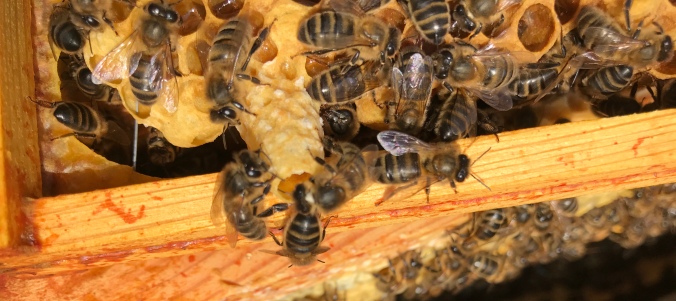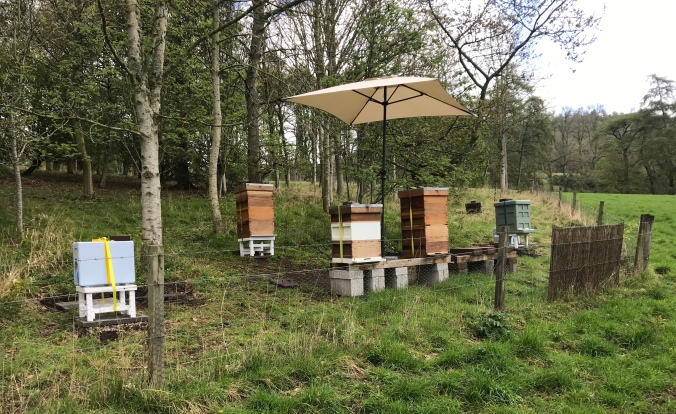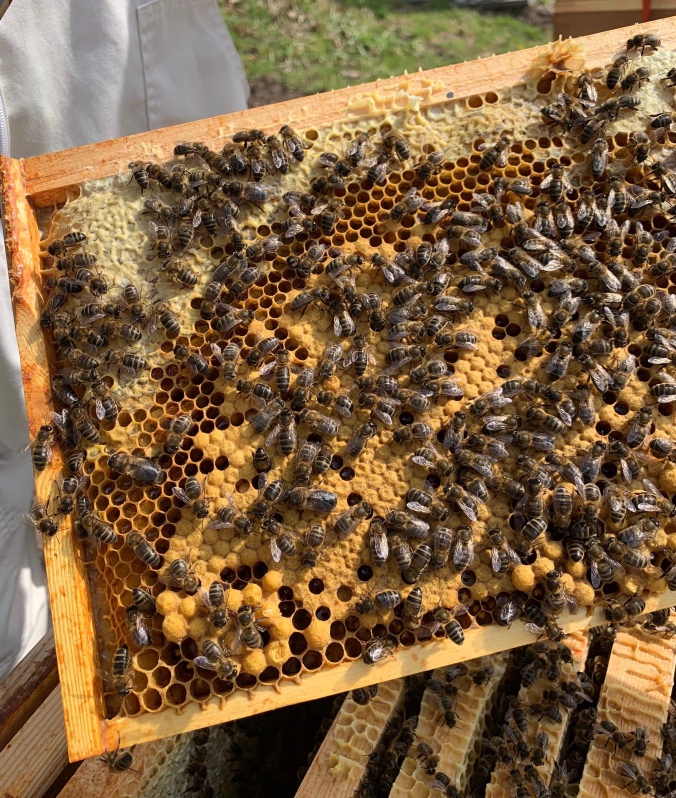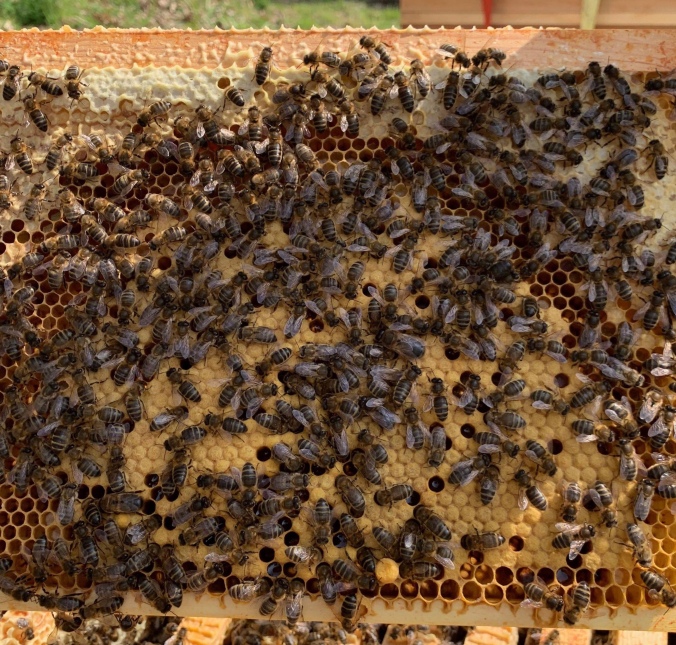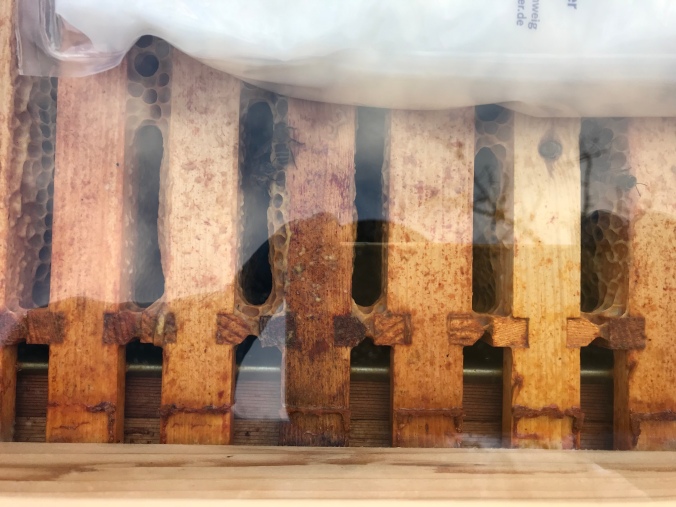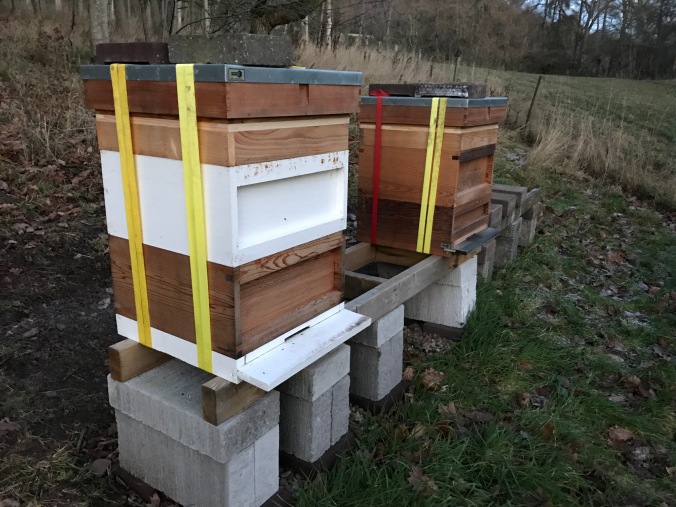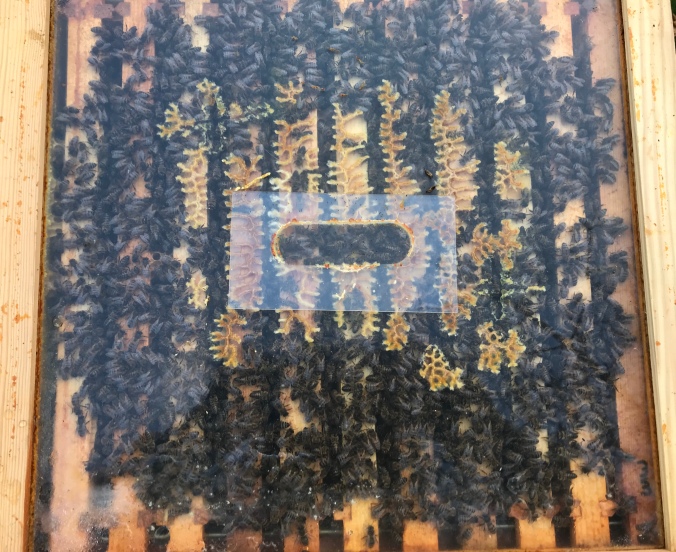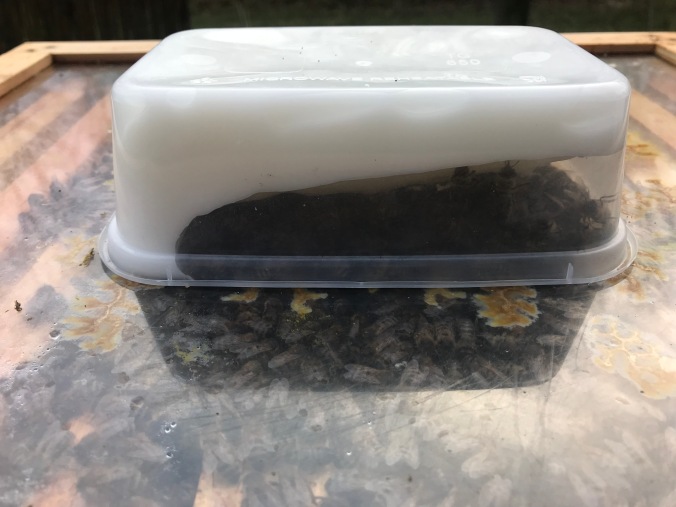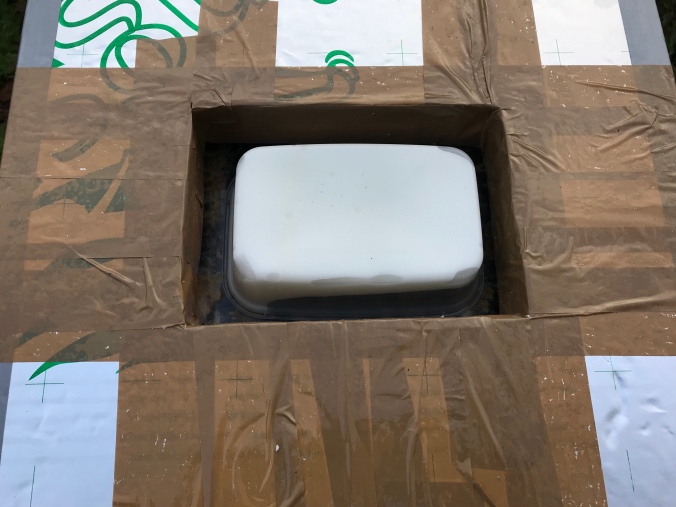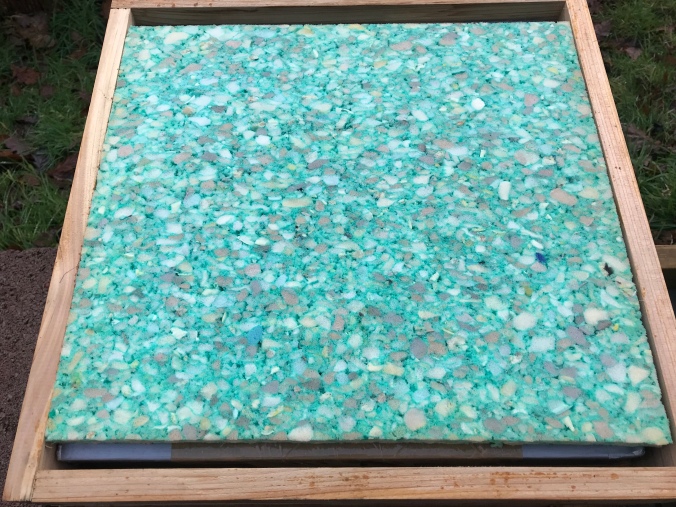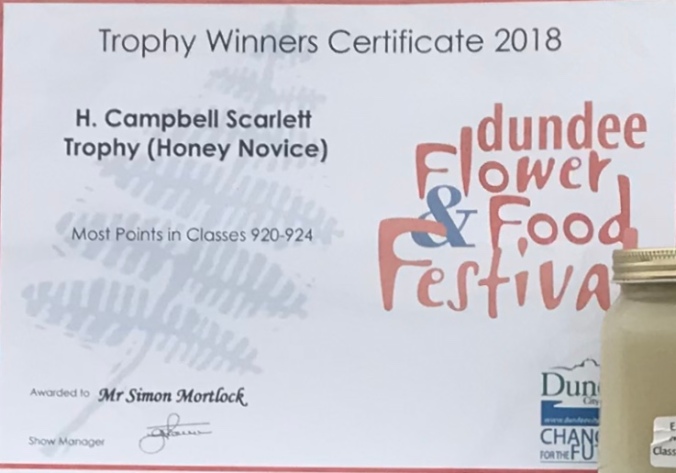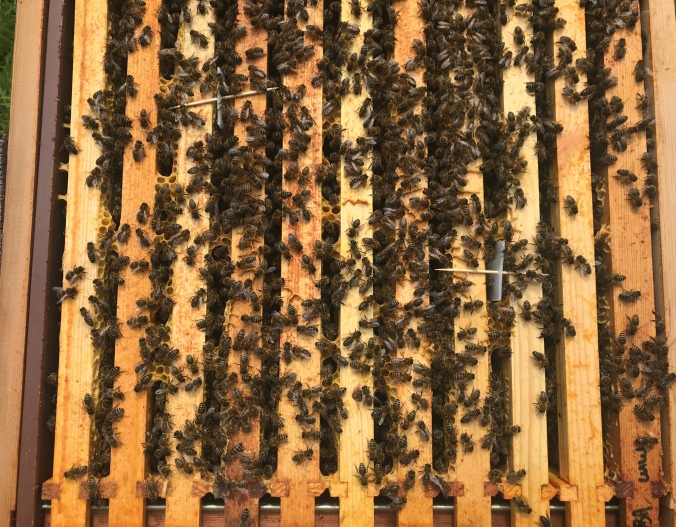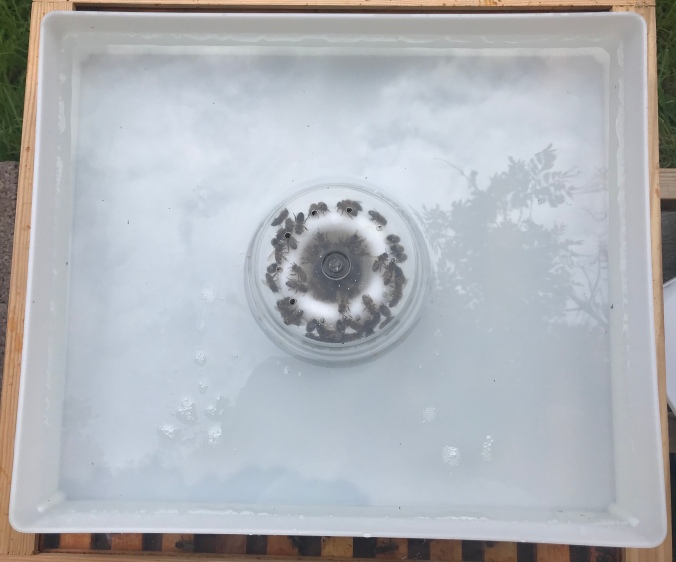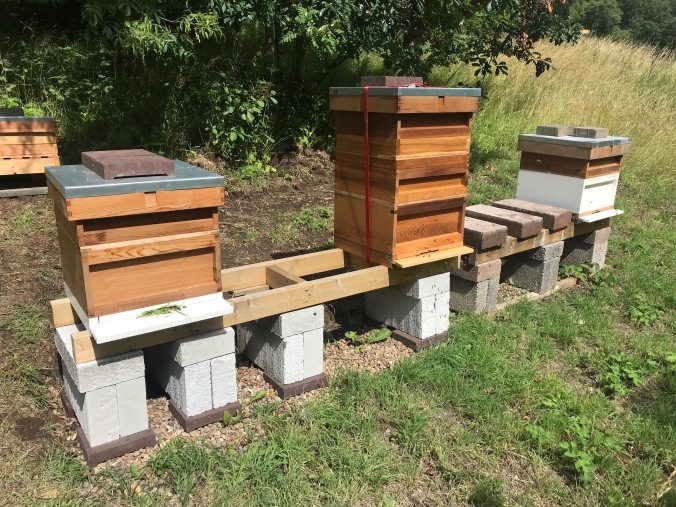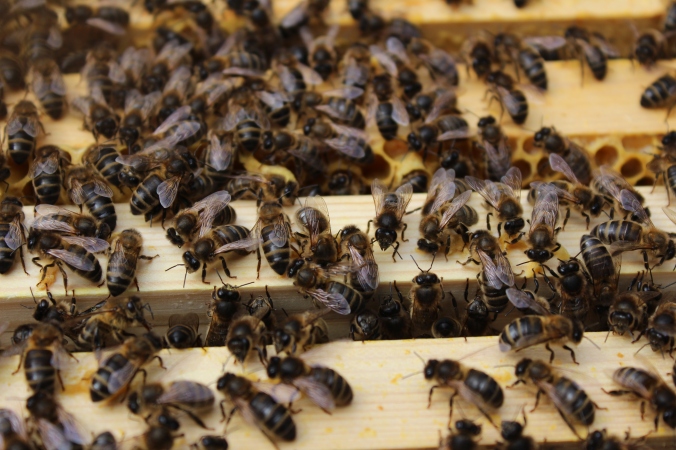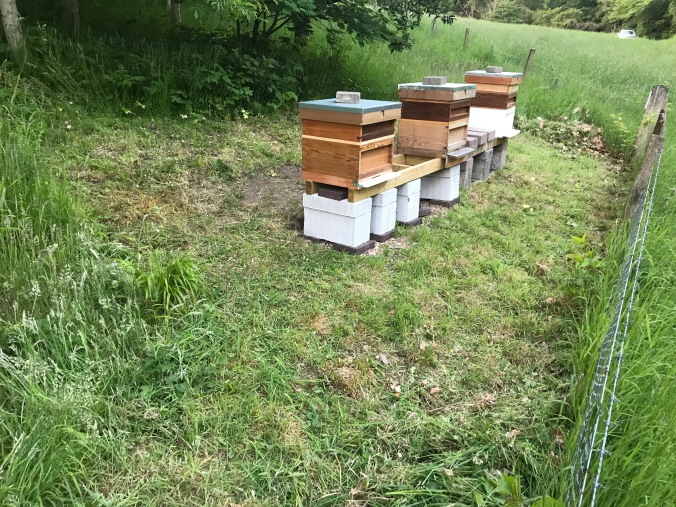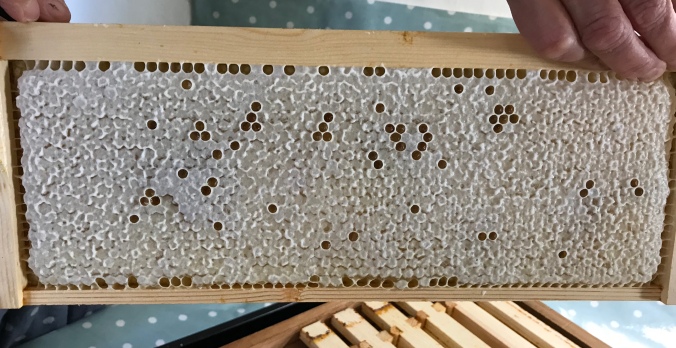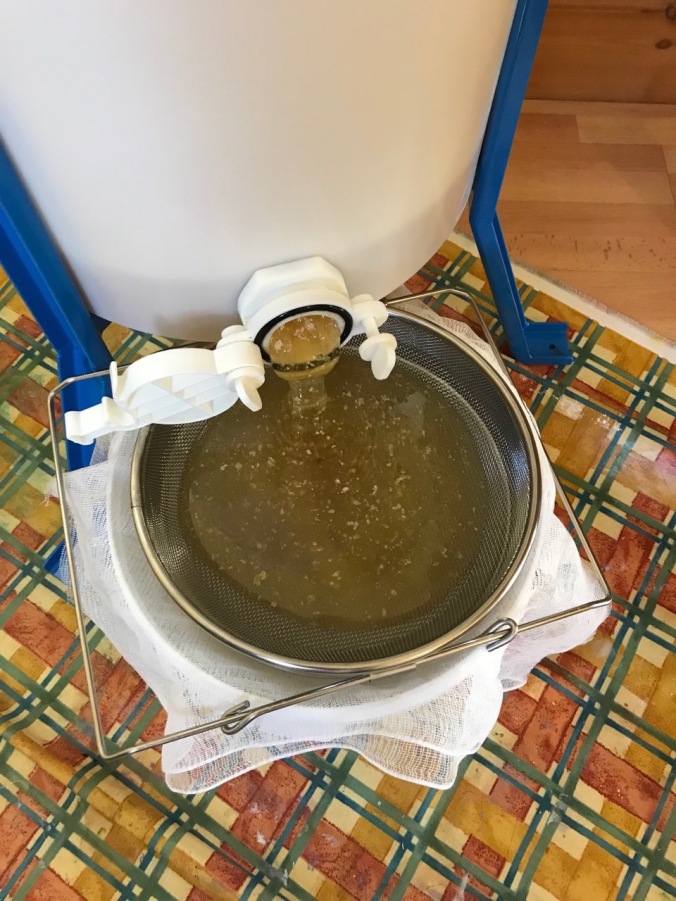There is so much to say and so little time to say it. (Metaphor for life?)
My learning curve continues to be a steep one. Who knows when it will level out 🙂
Here is a summary:
- Continued to study over the winter and prepared necessary equipment.
- Attended an ‘Integrated Pest Management & Adult Bee Diseases’ course.
- Attended a ‘Swarm Control’ course.
- Attended a ‘Queen Rearing & Nucleus Creation’ course.
- I have an SBA Bee Basics Practical Exam in a couple of weeks from now.
- My Apiary now consists of 5 colonies (3 wooden hives and 2 poly’ hives) and 1 bait hive.
- I have 1 NUC (6-frame) in my garden that is in the process of superseding its 2015 queen

- I had to carry out ‘swarm control’ three times and on each occasion I chose the ‘nucleus method’.
- During June, two of the colonies became quite low on stores and required supplementary feeding – particularly because the colonies had a lot of foundation to draw out and a lot of wax creation was needed.
- A poor start to the season, in respect of the weather, meant that initial inspections were late. Then a short spell of good weather kicked everything off and the potential for swarming, when very few drones were around, was not a recipe for quick production of virgin queens that would go on to mate and then start laying successfully.
- My First colony was queen-less for 5 weeks and became a drone layer.
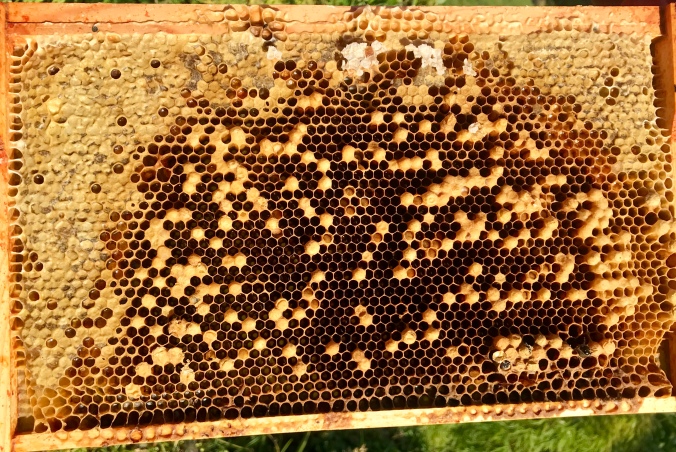
- Thankfully that situation has been resolved. The colony now has a queen and I am hoping she will start laying within the next few days – particular now that there is an expectation of better weather.
- I have made good use of ‘Test Frames’ and they “really do what they say on the tin”.
- As part of ‘Varroa control’ I like using 1 shallow frame in a brood box where the bees draw out their own drone comb. (What makes them choose drone brood below a shallow frame?). Timing seems essential. There is an advantage that the bees are kept busy and either the drones can add to the drone pool or the drone brood can be removed (and with it the varroa mite that is attracted to the drone brood that takes longer to mature than the females. (No sexist comments please 🙂 )

- I have tried out Poly hives and have concluded that, in addition to the wooden hives, both types of hive offer benefits over each other.
- I have had 1 unsuccessful attempt at using a mini-mating NUC to produce a queen from 1 queen cell that was removed from a colony that was attempting to swarm.

- I have been called out to assist with capturing swarms

- I have given advice to the two members of the public that had bumble bees nesting in empty bird boxes.
- And I have extracted 1 full super of honey (only) so far.
So all the fun of the fair. Oh what fun to be had. Here’s hoping that July and August will be good months for beekeeping.




